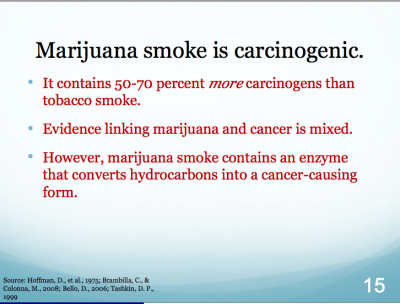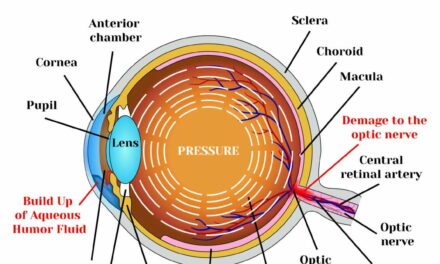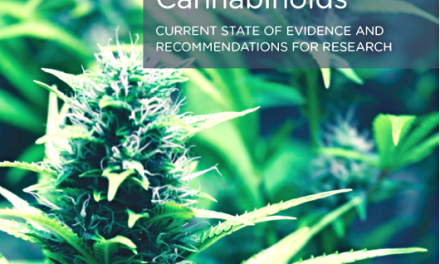A Sign of the Times
Note to the SCC from Fred Gardner April 1, 2016 Peter Cervieri has written a powerful piece on “the curious addition of Cannabis to California’s Prop 65 List of Cancer Causing Chemicals.” Because “marijuana smoke” is on the list, dispensaries are legally required to post signs warning customers that “Smoke from cannabis contains chemicals known to the state of California to cause cancer.” The list of dangerous compounds is maintained by the Office of Environmental Health Hazard Assessment (OEHHA), a branch of the state’s Environmental Protection Agency.
Cervieri, 30 and LA-based, is not only a journalist, he’s a political organizer. He asks readers to contact him about petitioning the OEHHA to bring California’s Prop 65 list into line with the scientific evidence: Smoking cannabis does not cause lung cancer. The definitive study was done by UCLA pulmonologist Donald Tashkin (and the story was broken in O’Shaughnessy’s in 2005).
What scientists now know about cannabis and cancer is summarized by UCSF’s Donald Abrams in the current issue of Current Oncology as follows:
“For the cancer patient, cannabis has a number of potential benefits, especially in the management of symptoms.
Cannabis is useful in combatting anorexia, chemotherapy-induced nausea and vomiting, pain, insomnia, and depression. Cannabis might be less potent than other available antiemetics, but for some patients, it is the only agent that works, and it is the only antiemetic that also increases appetite. Inhaled cannabis is more effective than placebo in ameliorating peripheral neuropathy in a number of conditions, and it could prove useful in chemotherapy-induced neuropathy. A pharmacokinetic interaction study of vaporized cannabis in patients with chronic pain on stable doses of sustained-release opioids demonstrated no clinically significant change in plasma opiates, while suggesting the possibility of synergistic analgesia.
“Aside from symptom management, an increasing body of in vitro and animal-model studies supports a possible direct anticancer effect of cannabinoids by way of a number of different mechanisms involving apoptosis, angiogenesis, and inhibition of metastasis. Despite an absence of clinical trials, abundant anecdotal reports that describe patients having remarkable responses to cannabis as an anticancer agent, especially when taken as a high-potency orally ingested concentrate, are circulating. Human studies should be conducted to address critical questions related to the foregoing effects.”
 Why does the myth of cancer-causing cannabis still prevail? Look no further than Tashkin’s source of funding, the National Institute on Drug Abuse. Tashkin’s lab had gotten ample publicity when they reported finding high levels of benzene and other carcinogens in marijuana smoke. NIDA funded Tashkin well over the years, and helped him achieve renown. NIDA publicists widely circulated his photomicrographs of cells from lung tissue brown and “disorganized” after exposure to marijuana smoke. (The missus vowed to give up smoking.) In 2001 NIDA funded Tashkin’s “gold-standard” study on cannabis as a cause of lung cancer, in which the health of some 1100 Los Angeles area pot smokers was compared to 1100 non-smokers, controlling for confounding factors such as age, gender, neighborhood, socioeconomic status, tobacco use, etc. When Tashkin’s data showed —to his surprise— that cannabis use provides a slight but measurable protective effect against lung cancer, NIDA buried the story.
Why does the myth of cancer-causing cannabis still prevail? Look no further than Tashkin’s source of funding, the National Institute on Drug Abuse. Tashkin’s lab had gotten ample publicity when they reported finding high levels of benzene and other carcinogens in marijuana smoke. NIDA funded Tashkin well over the years, and helped him achieve renown. NIDA publicists widely circulated his photomicrographs of cells from lung tissue brown and “disorganized” after exposure to marijuana smoke. (The missus vowed to give up smoking.) In 2001 NIDA funded Tashkin’s “gold-standard” study on cannabis as a cause of lung cancer, in which the health of some 1100 Los Angeles area pot smokers was compared to 1100 non-smokers, controlling for confounding factors such as age, gender, neighborhood, socioeconomic status, tobacco use, etc. When Tashkin’s data showed —to his surprise— that cannabis use provides a slight but measurable protective effect against lung cancer, NIDA buried the story.
As years passed and the corporate media ballyhooed such flimsy, bogus studies as the one out of Duke alleging that marijuana use by teens caused an 8-point IQ loss later in life, we started thinking of Tashkin’s as The Greatest Story Never Told. (Cells in the lining of the lung die but don’t metastasize. Cannabinoids evidently provide an anti-oxidant effect.) Tashkin’s talk to the Society of Cannabis Clinicians can be viewed here, and a report on his talk at the 2008 Patients Out of Time conference, absolving cannabis of contributing to COPD, is in the 2009 issue of O’Shaughnessy’s. Tashkin’s earlier work implying that marijuana smoke was carcinogenic is still widely cited. The image at bottom is a slide from the stump speech of a Drug Warrior named Kevin Sabet.
After Peter Cervieri and his recruits stop the OEHHA from circulating lies about the herb we have a related project for them . Assuming that most of the 900 chemicals on the list indeed have been shown to cause cancer, birth defects, and other health problems —why are we, the people, being exposed to them in our air and water? Who manufactures and sells toxic chemicals for what purposes? Cervieri is co-founder of the Future Cannabis Project. We hope the future for pot partisans involves breaking out of the single-issue trap.
. Assuming that most of the 900 chemicals on the list indeed have been shown to cause cancer, birth defects, and other health problems —why are we, the people, being exposed to them in our air and water? Who manufactures and sells toxic chemicals for what purposes? Cervieri is co-founder of the Future Cannabis Project. We hope the future for pot partisans involves breaking out of the single-issue trap.
Fred Gardner




